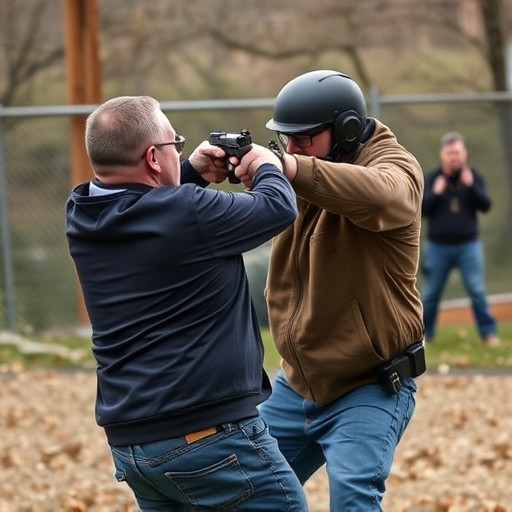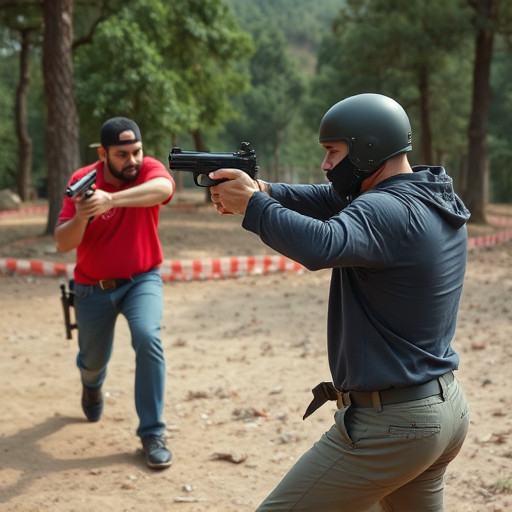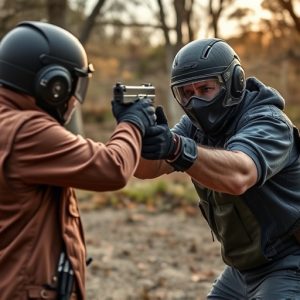Disguised Stun Guns: Unveiling Spread Pattern Analysis for Effective Self-Defense
Understanding electrical current spread is key to effectively using disguised stun guns as self-defe…….
Understanding electrical current spread is key to effectively using disguised stun guns as self-defense tools. These devices deliver powerful electric shocks that disrupt muscle control, making them valuable for incapacitating attackers without drawing attention. By analyzing contact points, resistance paths, and body conductivity, users can optimize defensive positions and ensure safe deployment. Advanced simulations and training help professionals predict current flow, enhancing their ability to utilize these tools in diverse self-defense scenarios while minimizing risks. Proper usage, maintenance, and knowledge of local laws are crucial for maximizing the effectiveness of disguised stun gun self-defense tools.
In today’s world, understanding electrical current spread patterns is crucial for both scientific research and personal safety. This article delves into the intricacies of electrical behavior, specifically exploring disguised stun guns as innovative self-defense tools. We analyze the science behind their functionality, focusing on the intricate spread pattern analysis. By examining theory, techniques, and practical considerations, readers will gain valuable insights into effective defense strategies. Discover real-world applications and safety precautions related to these game-changing disguised stun gun self-defense tools.
- Understanding Electrical Current and Its Behavior
- Disguised Stun Guns: A Unique Self-Defense Tool
- The Science Behind Stun Gun Functionality
- Analyzing Spread Patterns: Theory and Techniques
- Practical Considerations for Effective Defense
- Real-World Applications and Safety Precautions
Understanding Electrical Current and Its Behavior

Electrical current, a fundamental force in our modern world, plays an intricate role in various applications, including self-defense tools like disguised stun guns. Understanding its behavior is crucial for both scientists and individuals seeking effective protection. When an electric charge flows through a conductor, it creates a path, known as the current’s spread pattern, which can be analyzed to predict and control its movement.
The study of this spread pattern reveals how electricity disseminates across different materials and surfaces. In the context of stun guns, recognizing these patterns is vital for ensuring the safe and effective deployment of electrical shocks as self-defense mechanisms. By comprehending the behavior of current flow, users can make informed decisions when utilizing these tools, maximizing their impact while minimizing risks.
Disguised Stun Guns: A Unique Self-Defense Tool

In the realm of personal safety and self-defense, hidden weapons have long captivated the imagination—and for good reason. Disguised stun guns emerge as a unique blend of technology and practicality, offering individuals an extra layer of security in potentially dangerous situations. These innovative tools, often designed to resemble everyday objects like flashlights or pens, provide a covert means of self-defense without compromising discretion.
The appeal lies in their ability to deliver a powerful electric shock, temporarily incapacitating an assailant, while remaining virtually invisible to onlookers. This stealthy approach is particularly valuable in situations where a person may need to defend themselves discreetly, whether in crowded public spaces or during unanticipated attacks. With the growing popularity of these disguised stun guns, individuals now have access to effective self-defense tools that combine utility and discretion, empowering them to protect themselves with surprising force and subtlety.
The Science Behind Stun Gun Functionality

The functionality of a stun gun, often disguised as everyday self-defense tools, stems from its ability to disrupt muscle control through electrical current. When activated, the stun gun delivers a powerful electric pulse that interferes with the nervous system’s signals to muscles, causing them to contract involuntarily and leading to temporary incapacitation. This scientific principle leverages the body’s own electrical signaling system against it. The current disrupts the flow of ions within cells, specifically targeting sodium channels, which are crucial for nerve impulse transmission. As a result, the victim experiences a strong muscle spasm and disorientation, providing the user with a critical window of opportunity for self-defense or escape.
The spread pattern of this electrical current is meticulously designed to ensure maximum effectiveness while minimizing collateral damage. Advanced stun guns use focused, high-intensity pulses that can stun multiple targets simultaneously within a certain range. This strategic approach allows users to defend against multiple aggressors without causing severe or permanent harm, making them popular choices for personal safety and security applications.
Analyzing Spread Patterns: Theory and Techniques

Analyzing the spread pattern of electrical current is a critical aspect of understanding how concealed self-defense tools, such as disguised stun guns, operate and affect their targets. This analysis involves delving into both theoretical concepts and practical techniques to decipher the intricate dance of electricity. By examining these patterns, experts can gain valuable insights into the tool’s effectiveness, range, and potential risks, enabling them to make informed decisions regarding its use in self-defense scenarios.
Theoretically, the spread pattern represents the dispersion of electric current as it travels from the stun gun’s contact points to the target area. Various factors, including the distance between points, skin resistance, and current intensity, influence this pattern. Techniques for analysis involve using specialized software to simulate these conditions, allowing researchers to predict and visualize current flow. This data is crucial in training individuals on proper usage, ensuring safety, and maximizing the tool’s impact as a self-defense mechanism against potential attackers.
Practical Considerations for Effective Defense

When considering practical self-defense strategies, especially in scenarios involving hidden or disguised stun guns, understanding electrical current spread patterns becomes paramount. These tools, often compact and designed to evade detection, deliver powerful jolts of electricity that can incapacitate an assailant temporarily. However, for such defenses to be effective, it’s crucial to analyze how current flows through the body. Factors like the device’s contact points, the path of least resistance, and the body’s conductivity play significant roles in determining the stun’s impact. By studying these patterns, individuals can optimize their defensive positions, ensuring that the current is channeled effectively to neutralize a threat without causing unnecessary harm.
Moreover, practical considerations extend beyond theoretical knowledge. It’s essential for users to train in various grip positions and body orientations to ensure they maintain optimal contact areas. Regular practice sessions, involving both static and dynamic movements, can help individuals develop muscle memory, allowing them to deploy these tools instinctively during a confrontation. Additionally, staying informed about different stun gun models and their unique features enables users to adapt their defense strategies accordingly, making them more versatile and prepared in real-world situations.
Real-World Applications and Safety Precautions

In the realm of personal safety, the understanding and analysis of electrical current spread patterns have led to innovative tools like the disguised stun gun self-defense devices. These advanced gadgets harness the science behind electrical currents to deliver powerful jolts, incapacitating potential threats instantly. Their design incorporates sophisticated circuitry and materials that ensure a precise and efficient discharge, making them invaluable for individuals seeking protection in various settings.
When employing such tools, safety precautions are paramount. Users must be trained in their correct usage, as improper handling could result in harm to oneself or others. Proper maintenance and regular testing of the devices are essential to guarantee their reliability when needed most. Additionally, staying informed about local laws regarding stun guns and self-defense tools is crucial to ensure legal compliance and optimal safety during their utilization.
Electrical current spread pattern analysis is a crucial aspect of understanding the effectiveness of disguised stun guns as self-defense tools. By delving into the science behind their functionality and analyzing the theories and techniques involved, we can enhance our knowledge of these unique devices. Practical considerations for effective defense strategies are essential, especially when navigating real-world applications. Remember that, while stun guns offer a powerful deterrent, safety precautions must be prioritized to ensure their responsible use. In summary, this analysis highlights the importance of spread pattern understanding, fostering a safer and more informed approach to self-defense with disguised stun gun tools.


